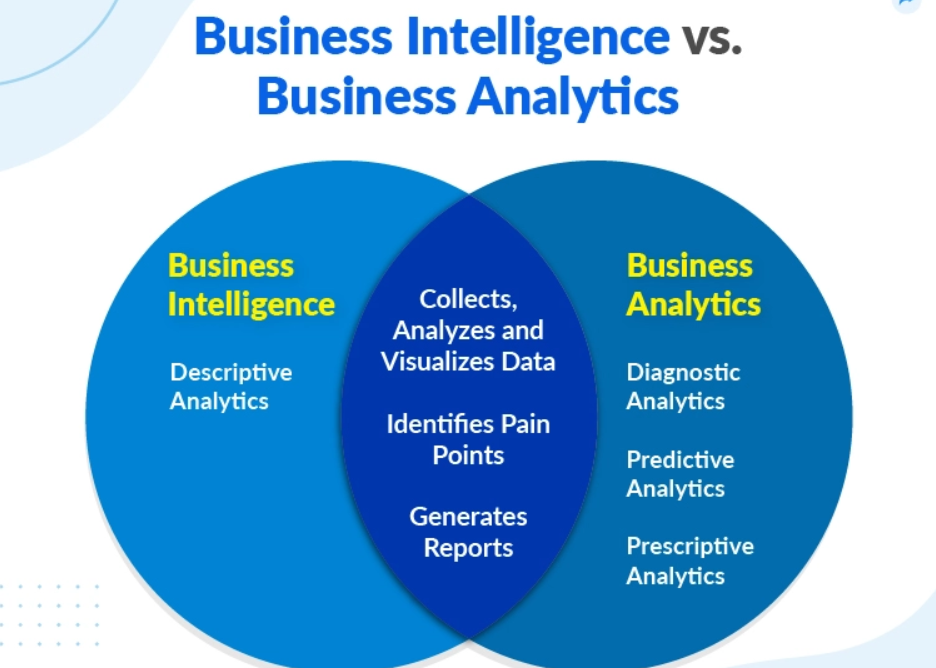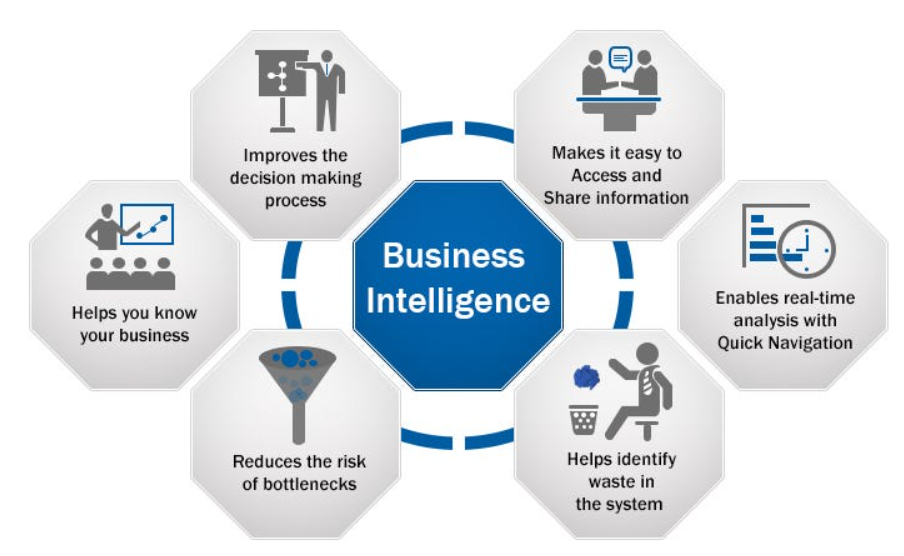In the current era of technology and data-driven decision making, it has become crucial for businesses to make use of Business Intelligence (BI) tools. Business Intelligence provides a way to gather, analyze, and convert raw data into meaningful insights for the business.
However, the concept of Business Intelligence can be complex and intimidating for beginners. This guide aims to provide a comprehensive introduction to Business Intelligence and its applications.
What is Business Intelligence?
Business Intelligence refers to the process of collecting, analyzing, and presenting data to gain valuable insights for the business. It involves a set of tools, technologies, and processes that help organizations to transform data into actionable insights.
BI systems collect data from various sources such as customer data, sales data, financial data, and operational data. These data sets are then analyzed to identify patterns, trends, and insights that can help businesses make informed decisions.
Business Intelligence vs Business Analytics

Business Intelligence and Business Analytics are often used interchangeably, but they are not the same thing. Business Intelligence deals with descriptive analytics, which involves analyzing historical data to identify patterns and trends.
In contrast, Business Analytics is a more comprehensive term that includes predictive and prescriptive analytics. Business Analytics involves analyzing data to predict future outcomes and prescribe actions to improve business performance.
How Does Business Intelligence Work?
The process of Business Intelligence involves four main stages: data collection, data analysis, data presentation, and decision making.
Data Collection
In the data collection stage, data is gathered from various sources such as databases, spreadsheets, and web applications. The data is then stored in a central repository, known as a data warehouse.
Data Analysis
Once the data is collected, it is analyzed to identify patterns and trends. This is done using various analytical techniques such as data mining, machine learning, and statistical analysis.
Data Presentation
The insights gained from data analysis are then presented in a way that is easy to understand. This is done using data visualization tools such as charts, graphs, and dashboards.
Decision Making
The final stage of Business Intelligence is decision making. The insights gained from data analysis and presentation are used to make informed decisions that can improve business performance.
Benefits of Business Intelligence
Business Intelligence provides several benefits to organizations. Some of the key benefits include:

Improved Decision Making
Business Intelligence provides valuable insights that can help businesses make informed decisions. By analyzing data, businesses can identify trends and patterns that may not be visible otherwise.
Increased Efficiency
Business Intelligence can help businesses streamline their processes and increase efficiency. By identifying inefficiencies in processes, businesses can make changes to improve performance.
Better Customer Insights
By analyzing customer data, businesses can gain insights into customer behavior and preferences. This can help businesses to improve customer satisfaction and retention.
Competitive Advantage
Business Intelligence can provide a competitive advantage by providing insights that can help businesses stay ahead of their competitors.
Common Business Intelligence Tools
There are several Business Intelligence tools available in the market. Some of the most popular ones include:
Tableau
Tableau is a data visualization tool that allows users to create interactive dashboards and reports. It is known for its ease of use and flexibility.
Power BI
Power BI is a Business Intelligence tool developed by Microsoft. It provides users with interactive visualizations, reports, and dashboards.
QlikView
QlikView is a Business Intelligence tool that provides users with interactive dashboards and visualizations. It is known for its powerful data analysis capabilities.
Challenges of Business Intelligence
Implementing Business Intelligence can be a complex and challenging process. Some of the common challenges include:
Data Quality
Data quality is a major challenge in Business Intelligence. Poor quality data can lead to inaccurate insights and decisions.
Data Security
Business Intelligence systems deal with sensitive data, which makes data security a critical concern. It is important to ensure that data is protected from unauthorized access and theft.
Technical Expertise
Business Intelligence systems require technical expertise to implement and maintain. This can be a challenge for organizations that do not have the necessary skills in-house.
Conclusion
Business Intelligence is a powerful tool that can help businesses make data-driven decisions. By collecting, analyzing, and presenting data, businesses can gain valuable insights into their operations and customers. While implementing Business Intelligence can be a challenging process, the benefits it provides are well worth the effort.
FAQs
- What types of data can Business Intelligence systems collect? Business Intelligence systems can collect various types of data such as customer data, sales data, financial data, and operational data.
- Can Business Intelligence help improve customer satisfaction? Yes, by analyzing customer data, businesses can gain insights into customer behavior and preferences, which can help improve customer satisfaction.
- What is the difference between Business Intelligence and Business Analytics? Business Intelligence deals with descriptive analytics, while Business Analytics includes predictive and prescriptive analytics.
- What are some popular Business Intelligence tools? Some popular Business Intelligence tools include Tableau, Power BI, and QlikView.
- What are some common challenges of implementing Business Intelligence? Common challenges include data quality, data security, and technical expertise.
Pcode Show: